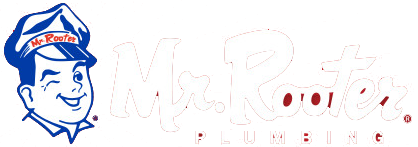Plumbing Maintenance Checklist
Introduction
Regular plumbing maintenance is essential to keep your pipes flowing smoothly all year round. A comprehensive plumbing maintenance checklist should include checking leak detection and water pressure, maintaining drains and water heaters, and inspecting all the fixtures and pipes for corrosion or rust. Regular plumbing maintenance offers plumbing cost savings, improved water quality, extended plumbing system lifespan, and the prevention of major problems. By proactively addressing the potential issues, we can avoid costly repairs, water damage, and health hazards associated with plumbing failures.
Stay Ahead of Plumbing Issues: Your Must-Have Maintenance Guide
Are you fed up with the tree roots periodically appearing in your sewer line? Do you feel your dishwasher is drawing slowly lately, and you’re noticing a foul smell around your sinks? Chances are that your plumbing woes will erupt soon. Plumbing maintenance is essential to maintain sanitation and prevent costly damage. Negligence can lead to significant financial losses for businesses due to unplanned downtime.
| Did you know?
Unplanned downtime due to plumbing issues can cost businesses up to 20% of their productive capacity. |
Here is your essential plumbing maintenance checklist to keep your pipes flowing smoothly.
1. General Plumbing System Maintenance
Leaks inspection
Regularly check for any signs of water damage in all visible pipes, faucets, fixtures, and connections. Look for water stains, dampness, or rust, and address any issue promptly to prevent costly repairs later.
Test water pressure
Ensure the water pressure is within the optimal range with a water pressure gauge. The safe level is between 40 and 60 psi. Low or high pressure indicates underlying issues.
Inspect visible pipes for rust and corrosion
Check your exposed pipes for any signs of corrosion or rust, which can indicate any potential leaks or weak points.
Examine your toilet tank and faucets
Remove your toilet tank lid and regularly inspect for any signs of wear. Check for any leaks around the base or tank, and inspect the fill valve and flapper. Replace bad washers or cartridges to prevent dripping faucets from wasting water.
Inspect your shut-off valves
Test all the shut-off valves, including the main water valve, under sinks, in the dishwasher, behind toilets, etc., to see whether they are functioning properly and shut off in case of emergency.
Examine your drains
Check whether your sinks, tubs, and showers drain properly. Clear any minor clogs with a mild mixture of baking soda and vinegar.
Check for mold and mildew
Inspect the damp areas for any signs of mold or mildew, which is a telltale sign that there is an underlying water leakage.
| Fast fact
The US lost $33 billion in 2022 due to a lack of licensed plumbers, and by 2027, the shortfall could hit 550,000 workers. |
2. Maintenance of specific fixtures and appliances
Faucets and showerheads
Check for leaks, drips, and mineral buildup, and clean or replace aerators and showerheads to maintain optimal water flow.
Water heater
Flush the water heater to remove sediment buildup to improve its efficiency and lifespan. Check the anode rod for any wear and tear.
Sump pump
Test the sump pump by pouring water into the sump pit and ensure it activates and drains properly.
Garbage disposal and septic tank
To prevent clogs and odors, inspect and clean the garbage disposal drain connections. Tighten the connections and replace the gaskets if there are signs. Regularly schedule septic tank inspections and pumpings as recommended by the professionals.
3. Seasonal Maintenance
Inspect sewer lines for damage in summers, check sump pump functionality, and ensure proper water heater performance to prevent issues in winters. In fall, disconnect and drain outdoor hoses, insulate pipes, and test shut-off valves. Ensure adequate insulation of pipes in winters and check for ice dams on the roof, and ensure proper drainage around the foundation.
| Interesting fact
In 1700 BC, plumbers in Crete developed the first known flush toilet system, while in 1652, Boston established the USA’s first city waterworks system, primarily for firefighting purposes. |
Conclusion
By proactively addressing the plumbing issues, you can prevent the costly repairs, water damage, and health hazards associated with plumbing failures. Regularly following the plumbing maintenance checklist can prevent costly repairs and ensure the efficient operation of your plumbing system.
FAQs
What is preventive maintenance in plumbing?
Preventive maintenance in plumbing is a proactive way to keep your pipes, drains, and appliances running smoothly to avoid potential problems.
What are the smart plumbing fixtures?
These are the modern plumbing devices often connected to the internet, which include features like a leak detection system to enhance functionality and a water conservation system.
What is the plumbing outlook for 2025?
The shift towards smart home systems and sustainable plumbing products has caused the US plumbing industry to grow at a steady rate of 3.25 annually for the past 5 years.


